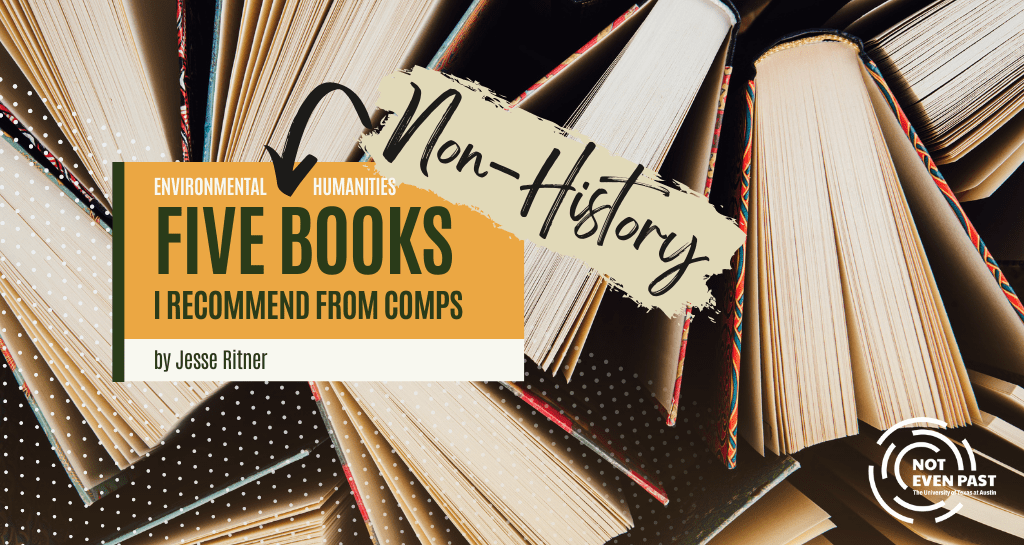
By Jesse Ritner
For graduate students in History, comprehensive exams (also known as orals, qualifying exams, or comps) are a crucial milestone on the way to finishing the Ph.D. I took my comprehensive exams in the Fall of 2020, defending about five weeks after the first COVID-19 isolation orders. Yet even without a pandemic, reading something like 160 books and dozens of articles and chapters from edited collections is a daunting task that freezes many. The stacks of books on your bedroom floor remind you as much of all the books you have not read as they do of the works you did read. Meanwhile, the sheer monotony of reading at least one (if not two or three) books every day exhausts the mind, the spirit, and the desire for a Ph.D. For me, my respite was in books written by non-historians. So here are my recommendations of works for burgeoning environmental historians that weren’t written by historians.
Seymour, Nicole. Bad Environmentalism: Irony and Irreverence in the Ecological Age. Minneapolis: University of Minnesota Press, 2018.
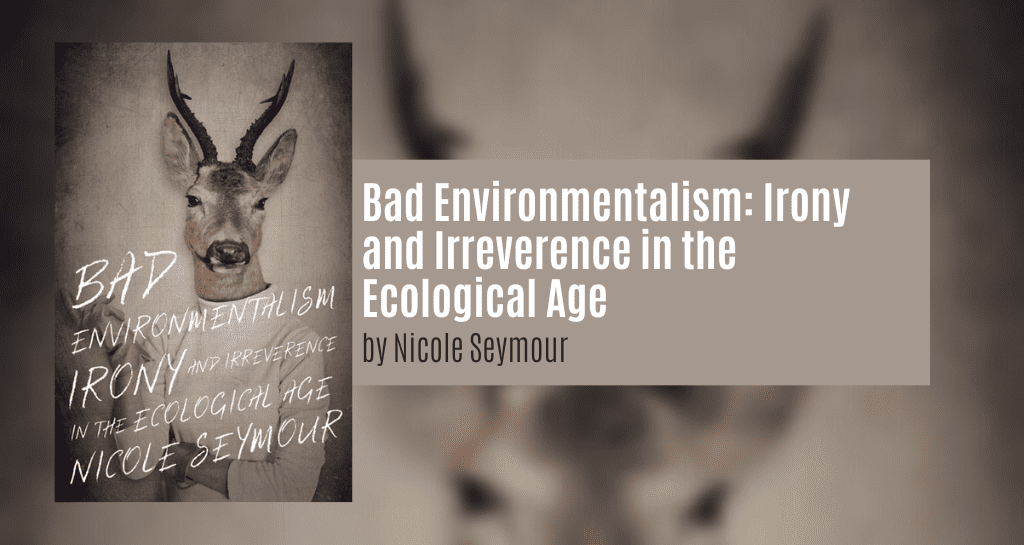
In this book, Nicole Seymour weaves a new concept she calls “bad environmentalism.” A literary theorist, she dives into “unserious” books, movies, art, and music and looks for joy. Theoretical in nature, the book never overwhelms the reader with deep dives into critical theorists unfamiliar to historians. Instead, it is funny, enjoyable and a call for a new type of action. Seymour reminds us that environmentalists shouldn’t take themselves too seriously. Laughing at the things that so many take seriously does not mean giving up hope. In fact, freeing ourselves from the type of purity that sits at the center of environmentalist ethics overcomes the doom and gloom so many environmentalists feel by reminding us of the pleasures of the environment we fight to protect. As much as anyone, Environmental Historians need the reminder.
Tsing, Anna Lowenhaupt. The Mushroom at the End of the World: On the Possibility of Life in Capitalist Ruins. Reprint edition. Princeton, NJ: Princeton University Press, 2017.
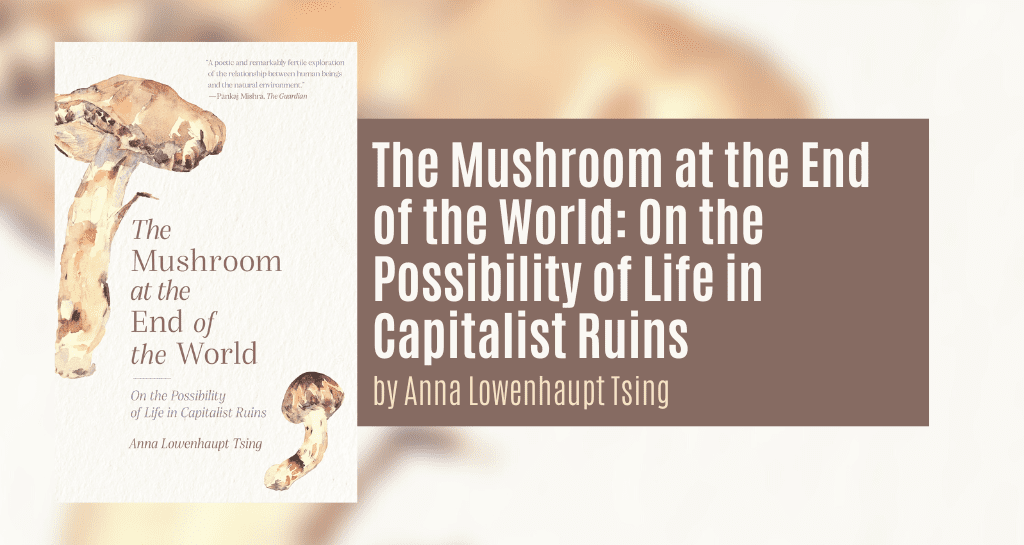
Upon its release five year ago, The Mushroom at the End of the World was the favorite within the field of Environmental Humanities. Everyone had to read it. Five years later, some have lost their enthusiasm, dissuaded by occasional historical and biological inaccuracies. The critiques are reasonable, but that should not dissuade graduate students from reading the book. Tsing’s ethnography of Matsutake mushrooms – a weed that grows in forests disturbed by humans is a beautifully, poetic, and inspiring narrative about life after capitalism – or otherwise put, life after the end of the world. The forests and mushroom hunters she studies seem almost to live in a science fiction future that has freed them from the corporate and global controls the rest of us suffer through. The amazing parts are the constant reminders that her book is not futuristic, it is about the here and now. Tsing makes us ask the question (even if it brings disaster): what if capitalism cannot end fast enough? Or maybe, her reading of the end of the world is the antithesis of The Walking Dead and other apocalyptic narratives where only the strongest survive through fragile democracies or absolute authority. Instead, mushrooms offer a radical opportunity to build a just world in harmonious relation with the environment.
Povinelli, Elizabeth A. Geontologies: A Requiem to Late Liberalism. Duke University Press Books, 2016.
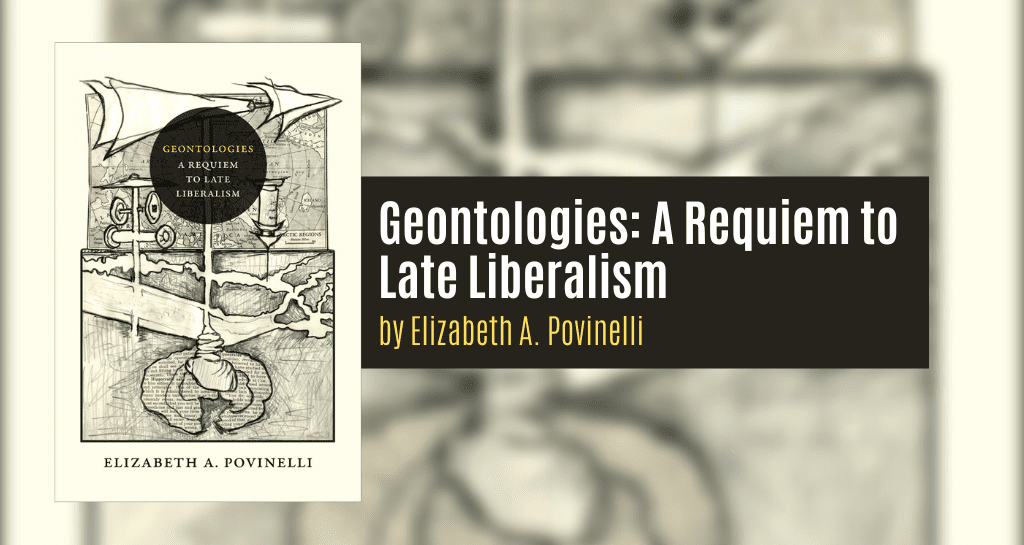
Povinelli’s magnum opus, Geontologies, is anything but an easy read. Yet for the lover of Michelle Foucault, no one has better integrated biopower and the environment. Povinelli contends that the origins of power are not in Foucault’s now-famous formula “to make live or let die” but rather center around the ability to make matter lively or inert. She contends that the capacity of governments and culture to distinguish what lives and what lacks life is the foundation of settler colonialism and capitalism. Through ethnography she demonstrates the way in which deeming certain matter as “without life” frees settlers to extract it, market it, and destroy it without a moral sense of harm and destruction felt by so many non-Western cultures. All these years later, historians still obsess over biopower. Povinelli offers us a constructive way forward, driving us to ask new questions about power, and to realize that the origins of all power are in the ability to determine material reality.
Bennett, Jane. Vibrant Matter: A Political Ecology of Things. Unknown edition. Durham: Duke University Press Books, 2010.
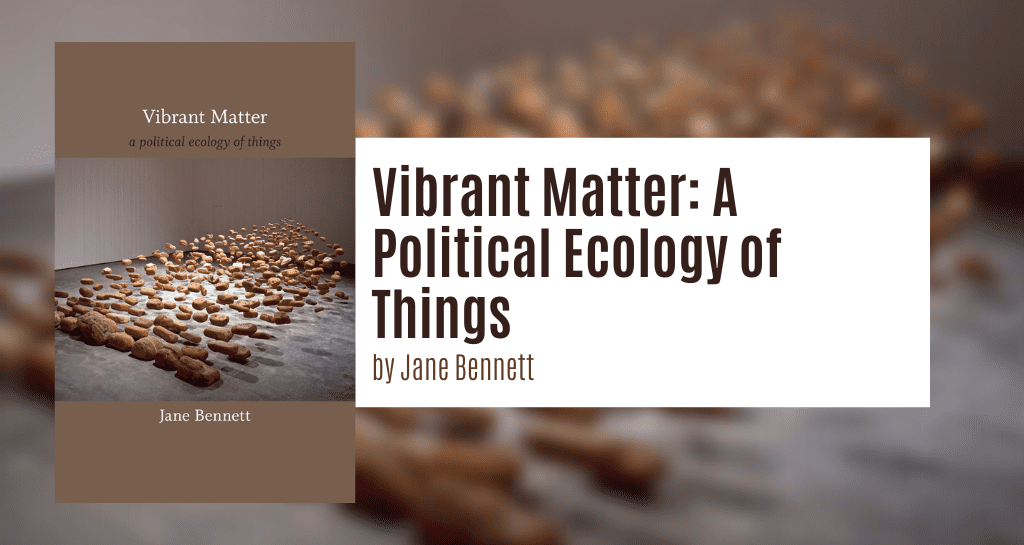
If anyone can flesh out for me the politics of vibrant matter, I will forever be thankful. But despite the ambiguous relationship between Bennet’s new materialism and political ecology, Vibrant Matter offers graduate students a way to think about history from molecules up, rather than culture down. Bennet’s work has influenced an array of now-influential environmental historians, including Timothy LeCain, Bathsheba Demuth, and Nancy Langston, among others. Nevertheless, there are still many reasons to return to this foundational text. There are others to choose from: Karen Barad’s theory of “agential realism” is, I think, more useful, while Philippe Descola’s “object-oriented ontologies” offer a path into issues of race, indigeneity, class, and the more common themes of history. That said, in a land of dense theory, Bennet’s is by far the most lucid and the most fun. If nothing else, read her chapter on the North American Blackout. It has changed many environmentalists’ view of the world. Maybe you will be next.
Govindrajan, Radhika. Animal Intimacies: Interspecies Relatedness in India’s Central Himalayas. Animal Lives. Chicago: The University of Chicago Press, 2019.
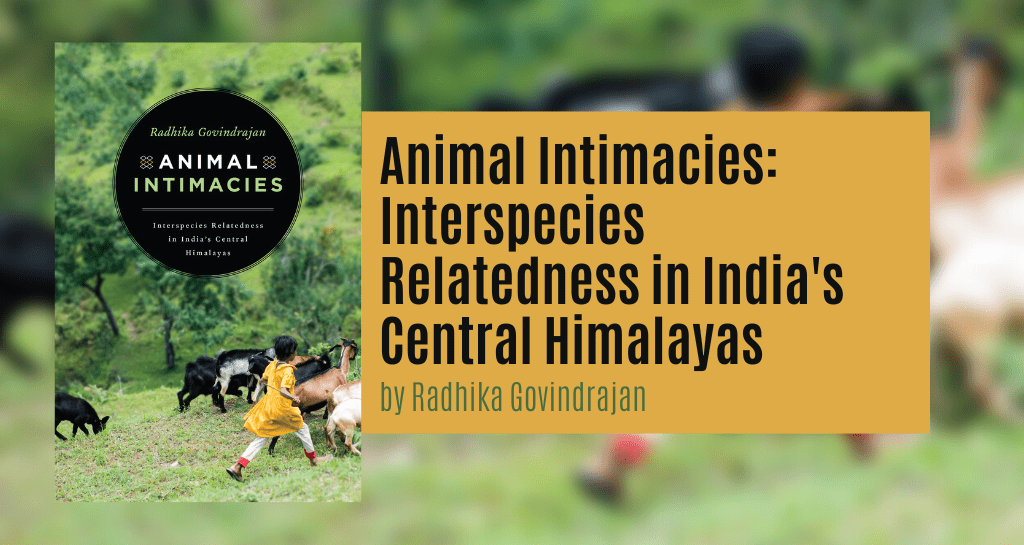
When taking Dr. Jason Con’s class “Nature, Culture, and Power,” we had the honor of reading and discussing a draft of this book with Radhika Govindrajan. Govindrajan powerfully and successfully deconstructs the separation between people and nature in mountain villages in India’s Central Himalayan region through questions about kinship, nature, culture, animality, and biology. Her stories are fascinating and comical (both to the reader and the people involved). For example, she discusses the queer imagination within stories about women trapped in the forest who have sex with bears – stories that are told in jest, but have moral weight. She examines the kinship between monkeys (usually thought of as pests) and the people they steal from, and the many other ways that those she studies are tied into more-than-human networks. Engaging, sometimes funny, heartfelt, and thought provoking, Govindrajan challenges us all to rethink our interactions with the world, and to perhaps re-examine how we think about human-animal kinship in the past.
The views and opinions expressed in this article or video are those of the individual author(s) or presenter(s) and do not necessarily reflect the policy or views of the editors at Not Even Past, the UT Department of History, the University of Texas at Austin, or the UT System Board of Regents. Not Even Past is an online public history magazine rather than a peer-reviewed academic journal. While we make efforts to ensure that factual information in articles was obtained from reliable sources, Not Even Past is not responsible for any errors or omissions.



